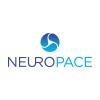RNS® System Feasibility Study
Epilepsy

About this trial
This is an interventional treatment trial for Epilepsy focused on measuring Responsive Stimulation, Brain Stimulator, Epilepsy, Seizures
Eligibility Criteria
Inclusion Criteria: Subject has simple partial seizures (motor or sensory) or complex partial seizures (with motor manifestations) with or without secondarily generalized seizures Subject has seizures that are distinct, stereotypical events that can be reliably counted, in the opinion of the investigator, by the subject or caregiver Subject has seizures that are severe enough to cause injuries or significantly impair functional ability in domains including employment, psychosocial, education and mobility Subject failed treatment with a minimum of two antiseizure medications (used in appropriate doses) with adequate monitoring of compliance and the effects of treatment Subject has remained on the same antiseizure medication(s) over the preceding three (3) months (independent of dose and other than acute, intermittent use of benzodiazepines) Subject has a minimum of four (4) or more countable seizures every month over the last three (3) months, as reported from the NeuroPace sponsored Prospective Seizure Frequency Clinical Investigation Subject is ≥ 18 years old and ≤ 65 years old Subject has undergone diagnostic testing that has established the epileptiform activity onset region(s) as part of his/her standard care to determine candidacy for epilepsy surgery Subject is male, or if female is using a reliable method of contraception (hormonal, barrier method, surgical or abstention), or is at least two years postmenopause Subject or legal guardian is able to provide appropriate consent to participate Subject can be reasonably expected to maintain a seizure diary alone or with the assistance of a competent individual Subject is able to complete regular office visits and telephone appointments per the protocol requirements Subject is willing to be implanted with the RNS® System as a treatment for his/her seizures Subject is able to tolerate a neurosurgical procedure Subject is considered a good candidate to be implanted with an RNS® System Note: 1 month = 28 days Exclusion Criteria: Subject has been diagnosed with psychogenic or non-epileptic seizures in the preceding year Subject has been diagnosed with primarily generalized seizures Subject has experienced unprovoked status epilepticus in the preceding year In the opinion of the investigator, the subject has a clinically significant or unstable medical condition or a progressive central nervous system disease Subject has been diagnosed with active psychosis, severe depression or suicidal ideation in the preceding year Subject is pregnant or planning on becoming pregnant in the next year Subject is on the ketogenic diet Subject was enrolled in a therapeutic investigational drug or device study in the preceding year Subject has an implanted Vagus Nerve Stimulator (VNS) Subject has had therapeutic surgery to treat epilepsy in the preceding year Subject is implanted with an electronic medical device that delivers electrical energy to the head or body Subject is on chronic anticoagulants or, in the opinion of the investigator, subject is an unsuitable candidate for cranial surgery for any other reason Subject had a cranial neurosurgical procedure in the previous month Subject requires repeat MRIs Subject's seizure onset zone(s) is/are located below the level of the subthalamic nucleus or, in the opinion of the investigator, the necessary lead placement would present too high a risk Note: Subjects with an inactive VNS could be enrolled so long as the VNS was explanted prior to or at the same time as the RNS® System implant. Subjects who had had epilepsy surgery (resective, corpus callosotomy or ablation) greater than one year ago were still eligible.
Sites / Locations
- Mayo Clinic Scottsdale
- Yale University School of Medicine
- Mayo Clinic Jacksonville
- Medical College of Georgia
- Rush University Medical Center / Epilepsy Center
- Louisiana State University Epilepsy Center of Excellence
- Johns Hopkins University School of Medicine
- Henry Ford Hospital
- Mayo Clinic Rochester
- Weill Medical College of Cornell University
- Columbia University / Columbia Presbyterian Medical Center
- Swedish Medical Center
Arms of the Study
Arm 1
Arm 2
Arm 3
Active Comparator
Sham Comparator
Other
Treatment Group
Sham Group
Open Label Group
Group of subjects who have undergone RNS® System implantation who are randomized to receive RNS® System responsive stimulation (i.e. responsive stimulation enabled or turned ON) during the blinded Evaluation Period. Stimulation is enabled during the first month post-implant and may continue throughout the subject's participation in the study.
Group of subjects that have undergone RNS® System implantation that are randomized to receive sham-stimulation (i.e. responsive stimulation disabled or turned OFF) during the blinded Evaluation Period. Stimulation is enabled after transition into the Follow-Up Period (5th month post-implant) and may continue for the remainder of the subject's participation in the study.
Group of subjects who have undergone RNS® System implantation who were not randomized or blinded to therapy status during the Evaluation Period. Stimulation may have been enabled during the first month post-implant and may have continued throughout the subject's participation in the study.
Outcomes
Primary Outcome Measures
Secondary Outcome Measures
Full Information
1. Study Identification
2. Study Status
3. Sponsor/Collaborators
4. Oversight
5. Study Description
6. Conditions and Keywords
7. Study Design
8. Arms, Groups, and Interventions
10. Eligibility
12. IPD Sharing Statement
Learn more about this trial
